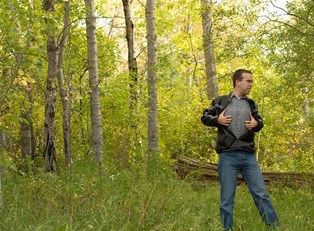The symptoms of poison ivy are basically the same symptoms as hives. For many people, brushing against or handling poison ivy causes a rapid allergic response. The blood vessels in the skin dilate. This causes fluid to ooze out of them into the skin. This presents as blisters that can grow to the point where they connect with each other. The blisters might be pale, while the area around them is pink, and they itch violently.
Poison Ivy and the Skin
Usually, the effects of poison ivy can last a week or two. The blisters can disappear without leaving any scarring or discoloration at all, but they may be followed by more hives. A bout of hives, therefore, may last for a few days. Scratching the hives produces relief, but this is temporary and counterproductive. That's because scratching only irritates the skin and can lead to even more swelling. Scratching the blisters can make them weep. The blisters then crust over.
Poison Ivy and the Eyes
Children especially should be told that if they touch poison ivy, they shouldn't rub their eyes afterwards. Poison ivy can affect the eyes as well as the skin. People who have had the toxin urushiol from poison ivy get into their eyes describe it as uniquely torturous. The eyes swell shut and burn and itch. The person's face may also swell up. He or she is effectively blind for about a week until the poison subsides or until a remedy can be found.
Poison Ivy and the Lungs
Some people make the mistake of burning poison ivy to destroy it. The smoke from the fire is full of the poison from the plant, and if it's inhaled, it can get into the lungs. This leads to the lungs and throat becoming swollen and irritated. This can lead to shortness of breath and difficulty in catching your breath. Blisters might even erupt in the lining of your lungs, which is not only very painful but dangerous. If you believe you've breathed in the smoke caused by burning poison ivy, you need to get to a hospital or under a doctor's care. He or she might then prescribe a course of corticosteroids to bring down the swelling.
Treatments
During the early stages of poison ivy symptoms, wet dressing should be applied continually to the affected area of the skin. The dressings should be saturated with a cool solution of boric acid. Later, calamine lotion or hydrocortisone cream can be applied to the blisters. Other people find hot showers and oatmeal baths soothing.
If a person has gotten poison ivy in his or her eyes, steroid therapy might be required. Steroids can be given orally or injected. Some people find relief from taking the B complex vitamins up to four times a day.
Prevention
It's true that poison ivy is a widespread plant in many places in the country, but that shouldn't stop you from enjoying the woods and the warm weather. Simply take precautions like wearing clothes that cover your arms and legs. Educate yourself and your kids about what poison ivy looks like. Remember the adage, "Leaves of three, let it be."



